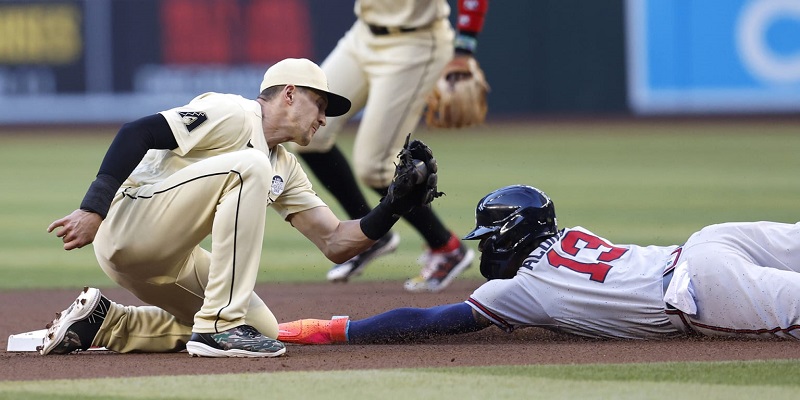Have you ever heard of the baseball rover position? This unique role adds another level of strategy, and understanding this role can transform how you view baseball, whether as a player, coach, or fan! So let’s delve into why so many find the baseball rover so intriguing.

History of the Baseball Rover Position
Origins and Development
The origins and evolution of rover positions date back to early baseball league play in amateur and youth leagues, where initially this role was often filled by the most athletic player on their team. Over time, as baseball strategies changed so too did its usage on teams of various levels, from Little League up through Major League play.
Notable Players Who Excelled as Rovers
Some players have made names for themselves as notable rovers, often distinguished by their adaptability and ability to understand the game quickly. Notable rovers have included utility players who frequently assumed this position for their team in order to increase defensive capabilities.
Roles and Responsibilities for Project Coordinators
Primary Responsibilities on the Field
A rover’s primary responsibility on the field is to cover more ground than traditional outfielders or infielders do, meaning they must be quick on their feet with excellent sense of positioning. Rovers frequently fill holes in defence by playing shallow outfield areas or filling in between standard infield positions.
How It Differs From Other Positions
In contrast with traditional positions, rovers don’t occupy fixed spots on the field. Instead, they must adapt according to each batter’s tendencies and game situation an adaptability which makes rovers an indispensable element of defensive strategy, particularly against unpredictable hitters.
Skills Required of Rover Drivers
Essential Physical Attributes
A Rover requires speed and agility in order to cover large areas quickly, making sudden bursts or changes of direction necessary. Furthermore, strong throwing arms may be needed to make long throws accurately directed to different bases.
Mental and Strategic Skills
For any rover to be successful in his or her position, they must possess acute game awareness and strategic thought processes. Anticipating where the ball will likely be hit requires having an in-depth knowledge of both game strategy and opposing team batting habits, in addition to understanding any situational strategies at play in any particular matchup.
Training for the Rover Position
Drills and Exercises
Rover training involves an array of speed drills, agility exercises, and fielding practice such as cone drills, ladder drills and reaction time exercises, in addition to fielding ground balls and catching fly balls from various positions in practice situations.
Tips for Improving Performance
Consistent practice is key to improving performance. Rovers should focus on increasing their quickness and reaction time. Reviewing game footage may offer insight into improving positioning and decision-making during live play.
Rover Position in Different Leagues
Major League Baseball (MLB)
While not officially recognized, managers frequently employ utility players as “rovers”. Managers utilise them in defensive shifts when filling gaps that arise during gameplay.
Minor Leagues and Amateur Baseball
Within minor leagues and amateur baseball leagues, the rover position has become more recognised and frequently implemented as part of defensive strategies to increase flexibility, providing talented, versatile players more playing opportunities.
Strategy and Tactics
How the Rover Influences Defensive Strategy
Rovers have an enormous effect on defensive strategy by offering extra coverage in areas of need; this role can be especially helpful against strong hitters or when additional support is crucial in key game situations.
Offensive Considerations
From an offensive viewpoint, having a rover present can alter batting strategies. Batters may attempt to hit away from its path or use its location to predict gaps in defence.
Famous Moments Involving Rovers
There have been countless unforgettable moments featuring rovers. Many iconic plays and game-changing moments feature these players, often showing their ability to make spectacular catches or vital defensive stops to change the course of crucial matches.
Analysis of These Plays
Examining these plays reveals the rover’s worth as an asset to their team, displaying his ability to quickly read the game and take quick, decisive actions that often save games that become legendary moments in baseball history.
Today’s Baseball Rover Position
Current Trends and Utilisation
Modern baseball’s use of the rover position is expanding and diversifying over time, as teams increasingly utilise analytics to predict where hits may land more accurately, making the role all the more strategic for teams.
Technological and Analytical Advancements
Technology and analytics have made it simpler than ever for teams to optimise rover positioning using data analysis. Teams utilise this knowledge to place the rover where it will make the greatest contribution defensively and increase defensive efficiency.
Challenges of Playing Rover
Common Difficulties and How to Overcome Them
Rover can pose its share of difficulties, including constant movement and quick decision-making, as well as physical training regimens to gain a deep understanding of the game. Overcoming these hurdles takes dedication and training on your part something which rover requires of you! To achieve success at playing Rover is not without its difficulties but it does come with ways of overcoming them through physical fitness and greater knowledge of it all.
Injury Prevention and Management
Rovering poses high physical demands. To reduce injuries, preventative measures like warm-ups and strength training are crucial; furthermore, being aware of one’s own body limits is crucial to avoid overexertion.
Comparing Rover Hybrid Positions
Similarities and Differences With Utility Players
Although both rovers and utility players possess versatile skill sets, rovers typically specialise in defensive coverage for the outfield, while utility players are adept at filling multiple positions both inside and outside of the infield as necessary.
Role Versatility and Team Dynamics
Rover versatility can improve team dynamics by offering flexible defensive options and adaptability that can turn tight games or manage player fatigue into game-winners.
Impact on Team Performance
Statistical Analysis
Research indicates that teams with effective rovers tend to boast better defensive records. Their ability to fill in gaps and make key plays significantly enhances overall team performance.
Case Studies of Successful Teams
Examining successful teams that use rovers can provide invaluable insights. These case studies showcase how strategic use of a rover can result in better defensive outcomes and more wins.
Future of Rover Position
Potential Changes and Developments
Promising Changes and Developments The future of rover positions appears bright, with potential changes that include more focused training programs and advanced analytical tools that could make this position an integral component of baseball strategy.
Predictions for the Next Decade
Over the next decade, we can expect that the rover position will play an increasingly prominent role, as teams utilise data and analytics to optimise defensive strategies.
Conclusion
Understanding the rover baseball position reveals its essential function within its strategy. From covering more ground to making game-altering plays, rover is an indispensable and indispensable member of any team. As the sport evolves further, its significance may increase further, bringing new dimensions to baseball’s landscape.





